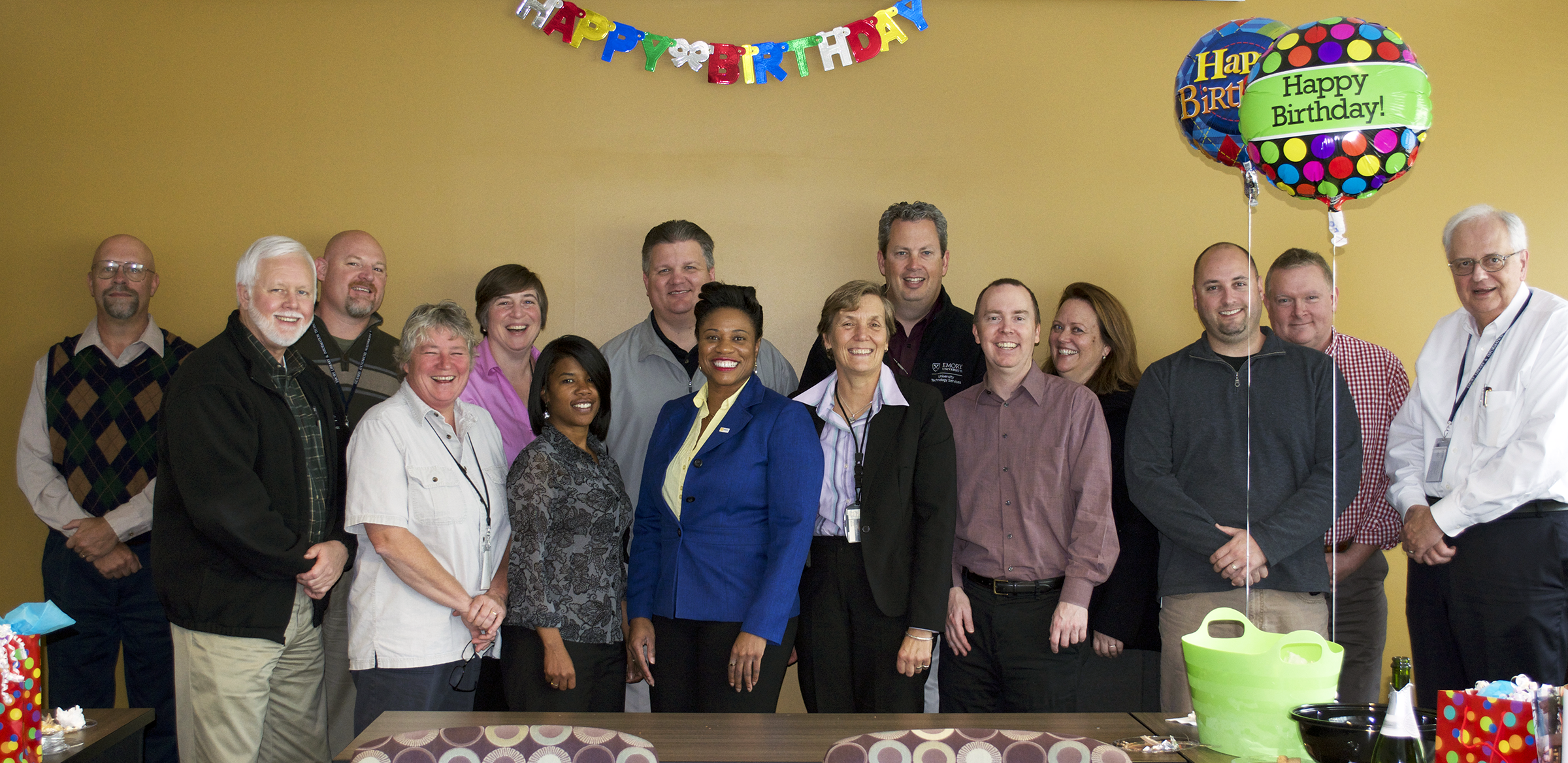
Front row from left: Scott Swann, Susan Greene, Ceray Doss-Williams, Trisha Wilson, Felicia Bianchi, Bill Szabrak, Mike Geraghty, and Graydon Kirk.
On November 5, 2013, the PMO (Project Management Office) celebrated its fifth anniversary as a team. Initially started as a team of ten, it has grown over the last five years to its current fifteen members. The team had its beginnings back in 2006 when UTS was known as AAIT (Academic and Administrative Information Technology). In those days, the division struggled with the problem of managing too many concurrent projects with the result that a number of them were never completed, and some of them tended to run over budget.
John Ellis set up and sponsored a committee of managers and directors with the goal of addressing these issues. The problems plaguing Emory were common to many organizations as reported in 2012 by a Gartner survey of large IT projects:
- Runaway budget costs are behind one-quarter of project failures for projects with budgets greater than $350,000.
- 17 percent of large IT projects go so badly that they can threaten the very existence of the company.
- On average, large IT projects run 45 percent over budget and 7 percent over time, while delivering 56 percent less value than predicted.
- A stunning 78% of respondents reported that the “Business is usually or always out of sync with project requirements”
Clearly, Emory had to find a better way to launch projects that would utilize IT resources and budgets more effectively and complete them on time.
John’s committee made a number of immediate improvements and one of the first was to create an inventory of current projects. The inventory showed that more projects were being executed than could be handled by the people assigned. Many projects required the same IT resources and priorities were not well defined. The nucleus of a PMO team was formed of people from NetCom and AAIT administrative services staff who already managed projects in their current role. By this time, Marisa Benson was asked to take over as chair of the committee in 2007; and in 2008, she was named the Director of the newly formed PMO.
During their first year, the team created project documents, templates and processes while many of the team members worked to earn their PMP (Project Management Professional) certification. That first year could be compared to a railroad company building an engine while it’s pulling a train down the tracks.
There are many challenges for any organization implementing a PMO, such as management support, cultural acceptance, strategic vision, and adequate funding just to name a few. The chief requirement for any PMO to succeed is senior management support. From the beginning, Rich Mendola, Brett Coryell and the LITS directors have supported the vision and goals of the PMO. The PMO has also received tremendous support from the LITS team members that have participated in the projects.
A number of project management improvements have been achieved during the first five years, such as increased on time project completion rates, projects closing on/or under budget, and customers expressing greater satisfaction with project deliverables. There are many challenges for the PMO over the coming years as we work to provide better tools for managing, forecasting and selecting projects that will return the best value for the organization. The next five years are guaranteed to provide some exciting and interesting challenges.

Leave a Reply